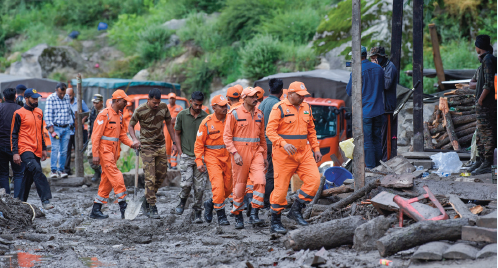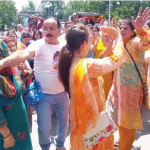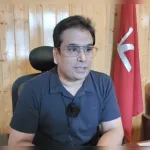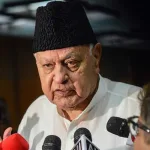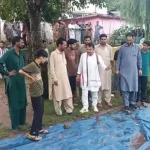In Chisoti village, time has stopped.Where homes once stood, only broken beams and silt remain. A lone slipper pokes out from a heap of debris. A child’s sweater, soaked and half-buried, flutters in the wind. And across the shattered landscape, the silence is pierced only by the rhythmic clink of spades and the occasional muffled cry as rescue teams dig, still hoping to find someone, still fearing what they might uncover.
Three days after a deadly cloudburst tore through this remote Himalayan village, grief hangs as heavy as the rain-sodden air.
In the corner of a makeshift relief camp, Sarita Devi sits on the ground, her face streaked with tears and mud. Her voice breaks every few words.
“My two children… my husband… my family. They’re all still missing,” she whispers. “The dead are being pulled from the debris, but ours, we haven’t even seen their faces.”
Eight members of her family vanished that morning. The wait has turned into a cruel silence. No one dares tell her to hope, but no one can take it from her either.
A few metres away, Ramesh Kumar, his clothes torn and his hands blistered from digging, recalls the moment the fury descended.
“It was like the mountain itself was falling,” he says. “People were swept away like logs. We screamed, but the water didn’t stop for anyone.”
The flood arrived with no warning, just a roar, and then darkness. In seconds, entire homes, lives, and generations were lost.
Meena Devi clutches a torn schoolbag like a relic. It was her daughter’s.
“Every time a body is pulled out, my heart stops. I run to check if it’s her. I only want to give her a proper farewell.”
Down by the river, Shravan, a farmer with mud-caked boots, stares into the distance. He survived by clinging to a rock for hours. His wife and son didn’t.
“The water came like a black wall,” he says. “I shouted their names. But they were gone. Now I wait every day, hoping someone finds them… just to see them one last time.”
Gita Devi, a grandmother, sits on a pile of rubble that was once her home. Her two grandsons are among the missing. She hasn’t cried, not yet. She simply stares.
“We raised them with such love,” she says softly. “In minutes, everything ended. How do we start again?”
All around, survivors drift in and out of the wreckage, dazed, hollow-eyed. No one eats much. No one sleeps. Each time rescuers shout or find something, people rush forward, hope rising, only to collapse again.
“Sometimes it’s a neighbour. Sometimes a stranger. But never my family,” says an elderly man whose brother and nephew are still missing. “I don’t know how long this wait will last.”
Sunita Sharma, one of the lucky few who managed to escape with her injured mother, still hears the screams at night.
“People were waving their hands, crying for help. I couldn’t reach them. I wish I could have saved just one,” she says, breaking down.
The rescue effort continues—brave, relentless. The Army, SDRF, police, and volunteers battle the elements: rain, loose earth, unstable terrain. The confirmed death toll has crossed 60. But it’s the missing that haunt the village most. Their absence is everywhere—in the empty cribs, the vacant doorways, the voices that fall silent mid-sentence.
As the hours stretch into days, the pain deepens. And hope, once fierce, now flickers like a candle in wind.
This tragedy has exposed, once again, the terrifying fragility of mountain villages like Chisoti, beautiful, remote, and vulnerable. The climate is changing, and with it, the mountains grow more dangerous. Yet for those here, the science of it all means little. Their world has already ended.
Back at the relief camp, Sarita Devi clutches her knees, rocking gently. Her voice is faint now.
“We don’t know whether to pray for life… or to prepare for death. All we want is to find them.”
And in Chisoti, the digging goes on.


